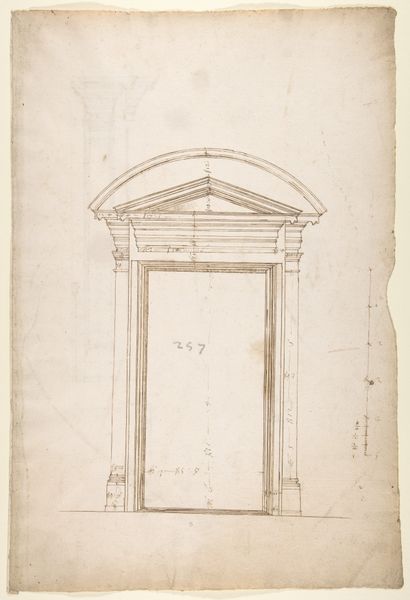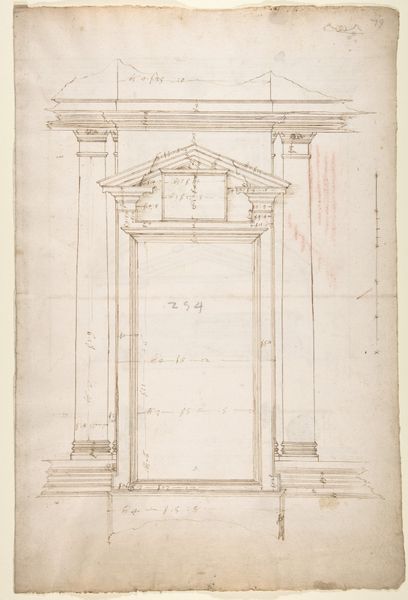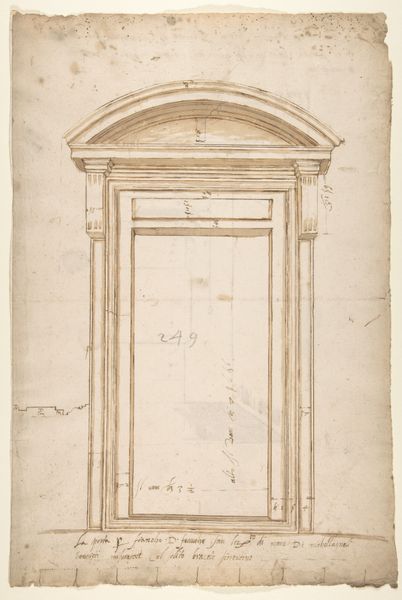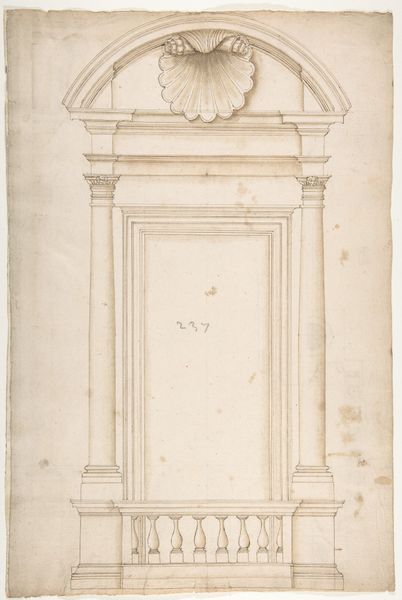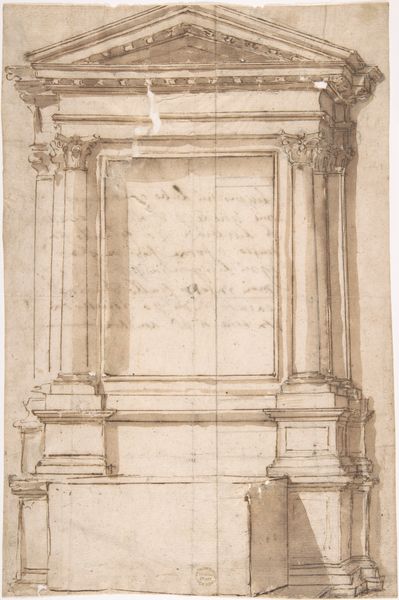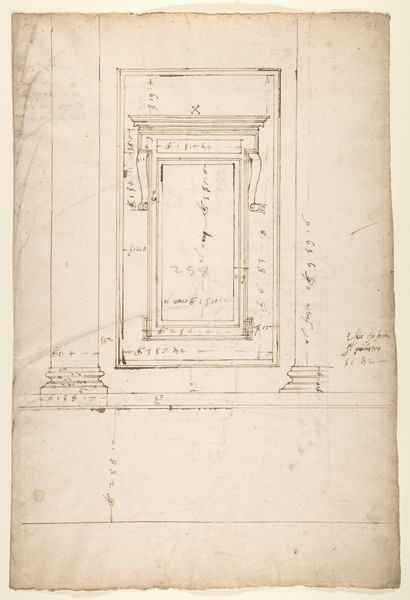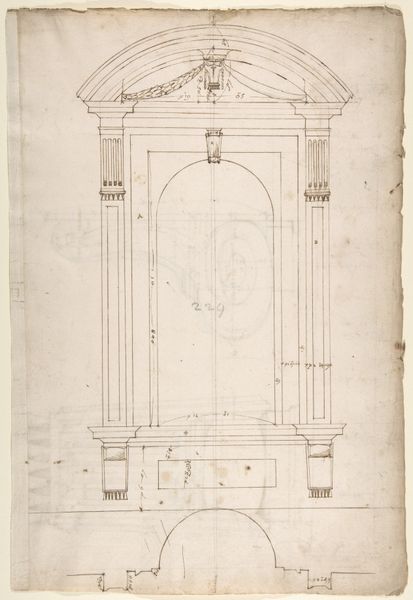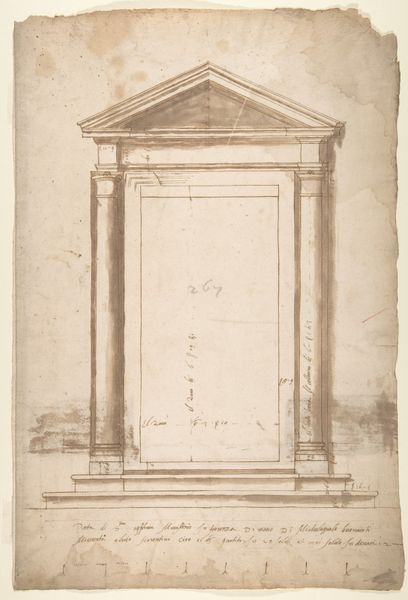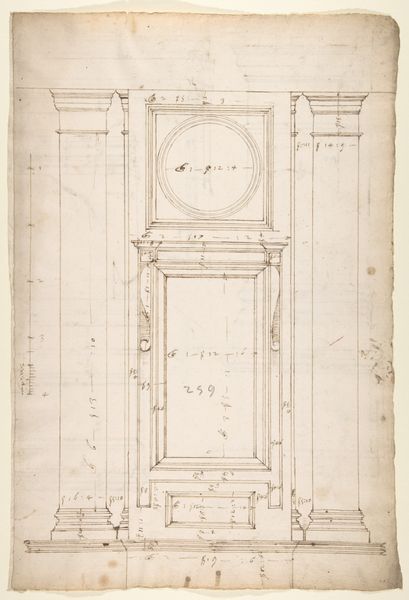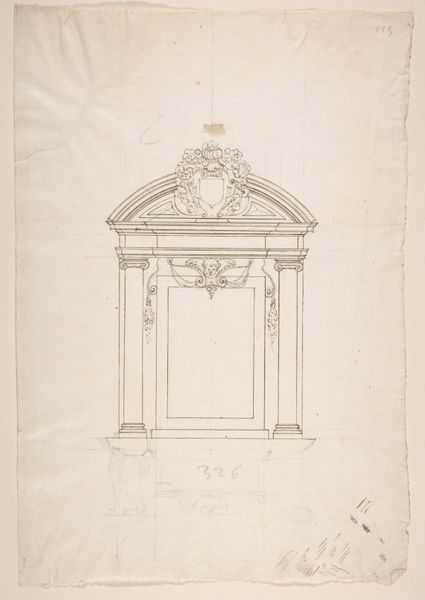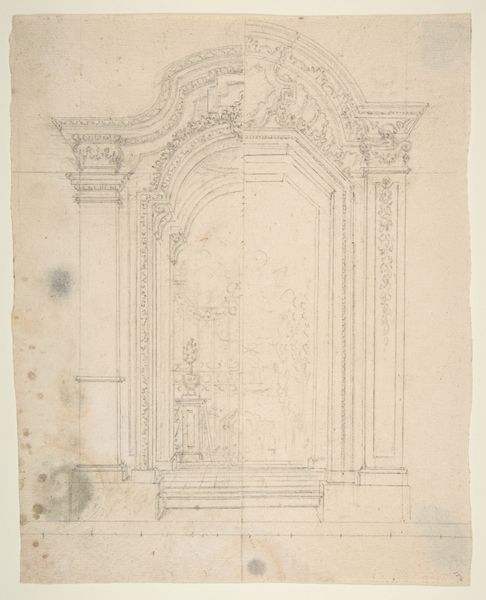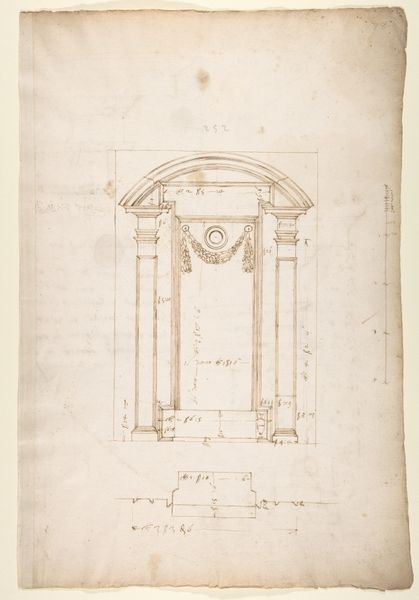
San Lorenzo, Library, Ricetto, portal to Ricetto, elevation; plan (recto) San Lorenzo, Library, Ricetto, portal to Ricetto, section; details (verso) 1500 - 1560
0:00
0:00
drawing, print, etching, paper, ink, architecture
#
drawing
# print
#
etching
#
perspective
#
paper
#
form
#
ink
#
geometric
#
line
#
italian-renaissance
#
architecture
Dimensions: sheet: 17 5/16 x 11 13/16 in. (44 x 30 cm)
Copyright: Public Domain
This sheet presents an elevation and plan of the portal to the Ricetto of the Library of San Lorenzo. In Renaissance architecture, the arch emerges as more than a mere structural element; it is a symbol of triumph and harmony, deeply rooted in Roman tradition. This arch echoes the triumphal arches of ancient Rome, structures erected to celebrate military victories and honor emperors. The arch represents the divine and the earthly, bridging the gap between the mortal and the eternal. We see the arch in various contexts across time. Consider the arch in Early Christian art, which transforms into the apse arch, framing the divine presence in mosaics. In Renaissance painting, arches often frame sacred figures, reinforcing their spiritual significance. The arch in architecture has continued to resurface, evolving into new forms and acquiring new meanings, yet always carrying the echoes of its classical origins, charged with cultural memory.
Comments
No comments
Be the first to comment and join the conversation on the ultimate creative platform.
